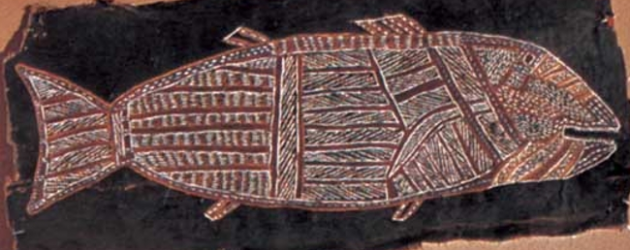Australian Aboriginals have been expressing their artistic talent and creativity through the medium of bark painting for centuries. This ancient art form is closely linked with the ceremonial and religios aspects of Aboriginal life, and the pieces are often highly sort after by art collectors and museums the World over.
As with any art work, the design and idea behind it are unique and belong to the creator, however with Aboriginal Bark art this is taken further; each artist has a design or ‘skin’ which is unique to his or her clan and are these are not allowed to be recreated by other artists. Given that these designs are often used in burial ceremonies and rituals, they are often very personal to the artist that created them.
Whilst the idea of bark painting had existed for some time, the modern aboriginal art form was first bought to public attention during the 1930’s when the work of the Yolngu people begun producing commercial bark paintings that could be sold as pieces of Aboriginal Art in the cities of New South Wales and Victoria. As word of these fantastic artefacts spread, the popularity of bark painting and Aboriginal Art in general increased to unprecedented levels and soon entire exhibitions were being devoted to the genre, featuring artists such as Naritjin Maymuru.
However, during the early and middle twentieth century, despite being popular bark painting was often considered an artisan product or a demonstration of local skill. By 1980’s this perception of Aboriginal art and bark painting in particular was beginning to change. Soon the medium came to be considered as a type of fine art, this not only resulted in an increase in the prices that could be charged but also the levels of supervision and analysis undertaken by art critics. Not only was the skill of the artist to be assessed, but also the quality of the wood and degree to which the piece captures the stories of ancient Aboriginal culture. This truly amazing type of artistic expression has a symbiotic relationship with the indigenous peoples as the bark painting not only records the stories and legends of old but allows for the expression of new stories and chapters in the progression of the Aboriginal artists.
